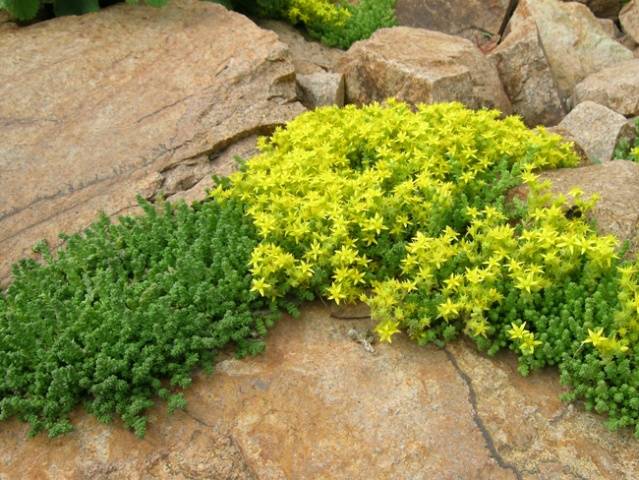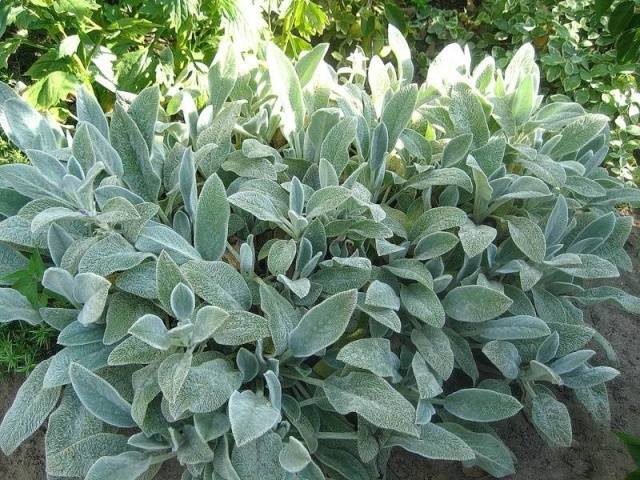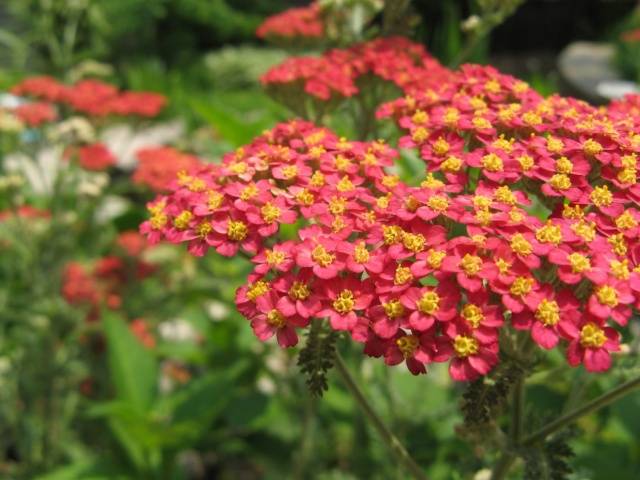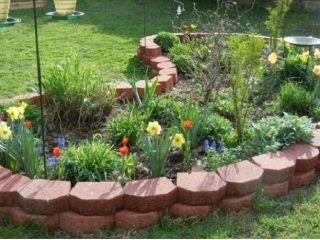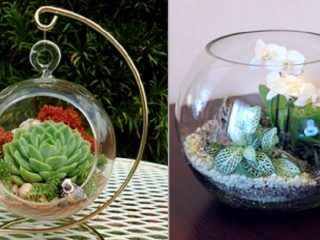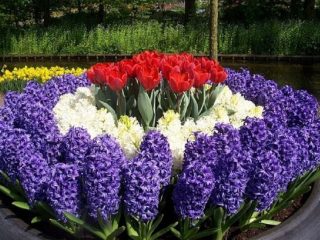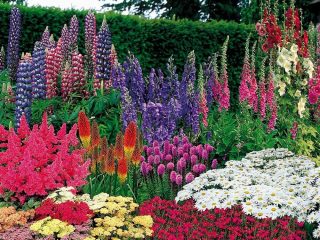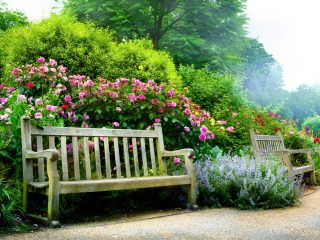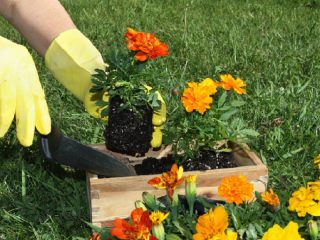Content
It is very good if the dacha or garden plot is open and sunny. The most beautiful and vibrant flowers prefer well-lit places, but they often require abundant watering. If we come to the dacha only on weekends or we simply can’t water our flower beds every day in the heat, lack of moisture can become a real problem. But this is only at first glance.
Drought-resistant perennials are numerous and decorative; they will decorate flower beds and discounts on our site with insufficient watering. And rocky hills, rock gardens, and rock gardens initially assume that they will be sparsely hydrated. Drainage is specially arranged there, poor, low-nutrient soils are poured in order to artificially simulate drought, even with an irrigation system. This doesn't make them any less beautiful.
Dry places in our garden
In addition to rockeries, rock gardens and slides, dry places may appear in any sunny area.Irrigation systems are laid before perennials are planted. Sometimes it happens that a small bush or tree grows over time and blocks the sprinkler’s ability to supply water to one or another area of the garden.
If we live in the city and come to the dacha only on weekends or holidays, the lack of moisture will definitely be felt, especially in sunny, dry summers.
In any garden there will be areas for which watering is not provided, or which dry out very quickly:
- in close proximity to a stone or concrete fence;
- on paved paths;
- adjacent to various steps, ladders connecting terraces;
- on the sunny terraces themselves with a small layer of soil.
But this shouldn't be a problem! The choice of perennials that grow in full sun is huge.
Sun-loving perennials for the garden
There are many drought-resistant herbs, flowers, shrubs, and trees that can successfully grow and bloom in sunny places with insufficient watering.
In this article we will look at sun-loving perennials.
Drought-tolerant ground covers
No drought tolerant ground cover perennials Not a single sunny plot will do. They help out when you need to cover a seemingly hopeless place where, due to the bright sun, thin layer of soil and lack of watering, nothing grows. The range of drought-resistant perennials for sunny places is huge; we will consider only the most popular.
Sedums
They are a large group of succulent perennials that are visually attractive, but drought-resistant and require virtually no watering.They receive moisture from the air and store it in thick leaves, grow quickly, cover the most problematic sunny areas, and are widely used to create slides and rockeries. The most popular types of ground cover sedums:
- acrid sedum;
- white sedum;
- Lydian sedum;
- sedum bent;
- Kamchatka sedum;
- false sedum.
There are tall species, the most popular of which is sedum, which is used in sunny flower beds, in garden beds and planted as a border.
Bryozoan
Bryozoan subulate or Irish moss is a tiny drought-resistant perennial that will perfectly fill the space between flagstones or path stones in a sunny area. Watering is required only immediately after planting. Tolerates any conditions - light, shade, drought, heavy rains, heat, frost. And in July, the bryozoan also blooms with tiny delicate flowers. Resistant to trampling.
Tenacious
This drought-resistant perennial fully lives up to its name - it can grow anywhere, in any conditions, but prefers sunny areas with poor watering. There are many varieties tenacious with varied leaf colors, there are even variegated forms. They reproduce by daughter rosettes and quickly form a multi-colored mat. The most popular types:
- creeping tenacious, which has a lot of varieties;
- tenacious Geneva;
- pyramidal survivor.
Rejuvenated
A compact succulent plant that grows in attractive rosettes with light green or purple leaves. In summer it blooms with rather large flowers located on long peduncles. Virtually no watering required.
Chistets woolly
Chistets are also called hare or sheep ears.This drought-resistant, sun-loving perennial is distinguished by elongated leaves that appear to be covered with gray-silver fur. In summer, the chistema blooms with blue, pink or purple flowers collected in a spike-shaped inflorescence.
Phlox subulate
Subulate Phlox forms a vast cushion of small, needle-like leaves. This drought-resistant perennial blooms in late spring - early summer with numerous small flowers of a wide variety of colors that almost cover the bush. It is planted in sunny areas on hills, in rockeries, as a low border or edging sunny flower beds, in separate clumps.
Monetary loosestrife
It is believed that loosestrife likes to be well watered, but without watering in the sun, it will also grow and bloom magnificently. In a sunny area, in the absence of regular watering, varieties with yellow leaves will have a particularly rich color. Loosestrife looks very beautiful on hills, slopes, even as a grassy lawn for dry, sunny places.
Drought-resistant flowers
Almost all flowers love sunny areas, many of them can withstand short-term drought. But the assortment of not just drought-tolerant, but drought-resistant flowers is so large that you can create many flower beds without ever repeating them. We will consider only a few of them, without claiming to have named the best - we all have our own preferences, and arguing which flower is the best is a thankless task.
Phlox paniculata
Our mothers and grandmothers grew phlox in sunny areas. Since then, this undemanding, drought-resistant perennial has disappeared from our sight for some time. Today, the fashion for phlox has returned, and many new varieties have appeared, painted in all sorts of colors except yellow.
Irises
It's hard to imagine a person who doesn't like irises. Among the many species there are real water lovers, growing right in reservoirs. But many irises are able to grow in sunny areas with virtually no watering throughout the hot summer, while still blooming and delighting the eye with beautiful long leaves.
Peonies
Peonies belong to the true elite of flowering perennials that prefer sunny places. They are beautiful not only during flowering - their leaves decorate our site until frost. At the same time, peonies can hardly be watered at all; they can be content with rare rains; only in the driest summers additional moisture may be required.
alpine aster
Alpine aster or perennial aster, which is sometimes called “frost” because it blooms until frost, is also very drought-resistant. In addition, today there are many new varieties of various colors and sizes. She's especially good as border perennial.
Bells
Among the many species, we are interested in mountain bells, which are drought-resistant and prefer to grow in sunny areas. Not only their flowers, but also their leaves are decorative. The most popular types of mountain bells:
- Carpathian bell;
- Portenschlag bell;
- Pozharsky's bell.
These perennials are always welcome guests on rocky hills and rockeries.
Daylilies
Some of the most beautiful flowering perennials are daylilies. There are many varieties of different sizes and colors. At the same time, daylilies are surprisingly unpretentious, they are drought-resistant, prefer sunny areas, and their leaves remain decorative even after the flowering period. Now daylily breeding pays special attention to the development of remontant (re-blooming) varieties.
Rudbeckia
This drought-tolerant perennial is like a little sunshine and always brightens the mood of everyone who looks at it. The size of rudbeckia, depending on the type and variety, can vary from 30 cm to almost 2 m. It will decorate any flowerbed and will not require abundant watering or careful care - for a successful growing season it only needs a sunny area. The most popular perennial species:
- Rudbeckia dissecta;
- rudbeckia glossy;
- Rudbeckia splendor.
Yarrow
Today on sale you can find many highly decorative varieties of yarrow in a wide variety of colors. It is very unpretentious and the only problem this perennial can pose is that it actively reproduces by self-seeding and can even litter the area. Prefers sunny places and is very drought tolerant.
Echinacea
Echinacea is like a large daisy that comes in colors of red, pink, purple and purple. It is very decorative and also has unique medicinal properties. This drought-resistant perennial grows in sunny places. Flower size and color vary, but almost all varieties are bred based on two species:
- Echinacea purpurea;
- Echinacea strange.
Spurge
One of the most drought-resistant perennials for sunny areas.Euphorbia can be used to decorate a hill, a rockery, it is suitable for creating borders, and tall species are used as a focal plant for a sunny place. The most popular types:
- Euphorbia multiflora;
- almond spurge;
- cypress spurge;
- Euphorbia capitata;
- Euphorbia bordered.
Herbs for dry areas
Nowadays, ornamental grasses are increasingly being included in the landscape design of personal plots. In large sunny areas, they even create special gardens from only herbs; they look amazing. Among them there are many inhabitants of the steppe, drought-resistant and growing well only under bright sun. In addition, most herbs remain decorative in winter.
Elimus
It is also called the grate. It was one of the first to appear in European gardens as a drought-resistant ornamental perennial. Very unpretentious, easily tolerates both drought and heavy rains.
Gray fescue
Compact and very attractive, drought-resistant fescue is used quite widely in design. Its individual bushes can often be seen on a sunny hill or in a rock garden, as a low border. If you plant a piece of land with only fescue, its bushes will resemble hummocks. This perennial unpretentious and is great for dry, sunny locations.
Thyme
Perhaps it is not entirely correct to classify thyme as a herb; from a botanical point of view, it is a shrub, but I really wanted to mention this wonderful sun-loving and drought-resistant plant. It is unpretentious, blooms attractively and has a charming aroma.Thyme looks great on a hill, in rocky gardens and is ideal for sunny places.
There are many types of this perennial:
- common thyme;
- creeping thyme;
- lemon-scented thyme;
- flea thyme.
Two-source
In cultivation, only the variegated form of the drought-resistant reed grass is grown, reaching a height of 90-120 cm. But it is used widely, often growing for years on the outer sunny side of the fence, where in the hottest summer there is not even a question of watering.
Feather grass
To plant it, choose the driest and sunniest area. Feather grass looks especially good in rock gardens and herb gardens, but a skilled landscape designer will always find somewhere to fit this wonderful drought-resistant perennial.
Conclusion
We have just touched on the topic of drought-resistant perennials for sunny areas. In fact, there are much more of them. Our area of attention did not include drought-resistant herbaceous shrubs and subshrubs. We hope that we have clearly shown that any plot of land can be populated exclusively with sun-loving plants that can withstand prolonged drought, and this will not make it less attractive than well-irrigated areas.

